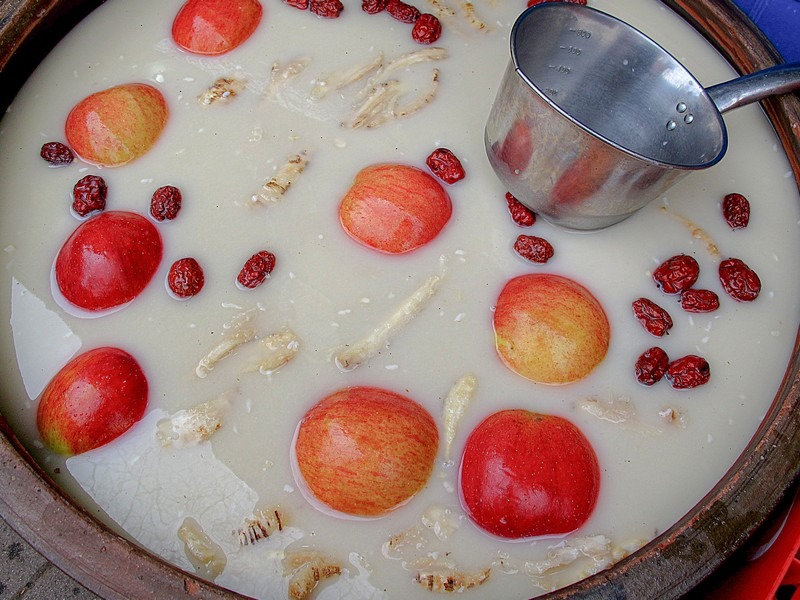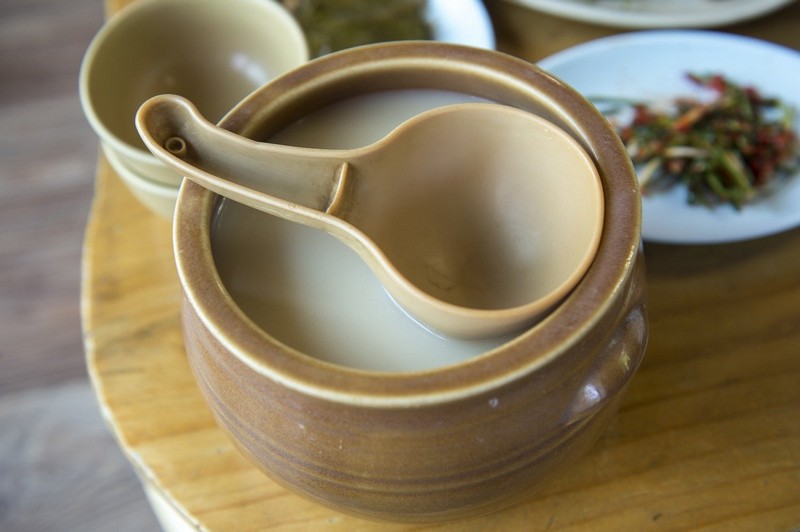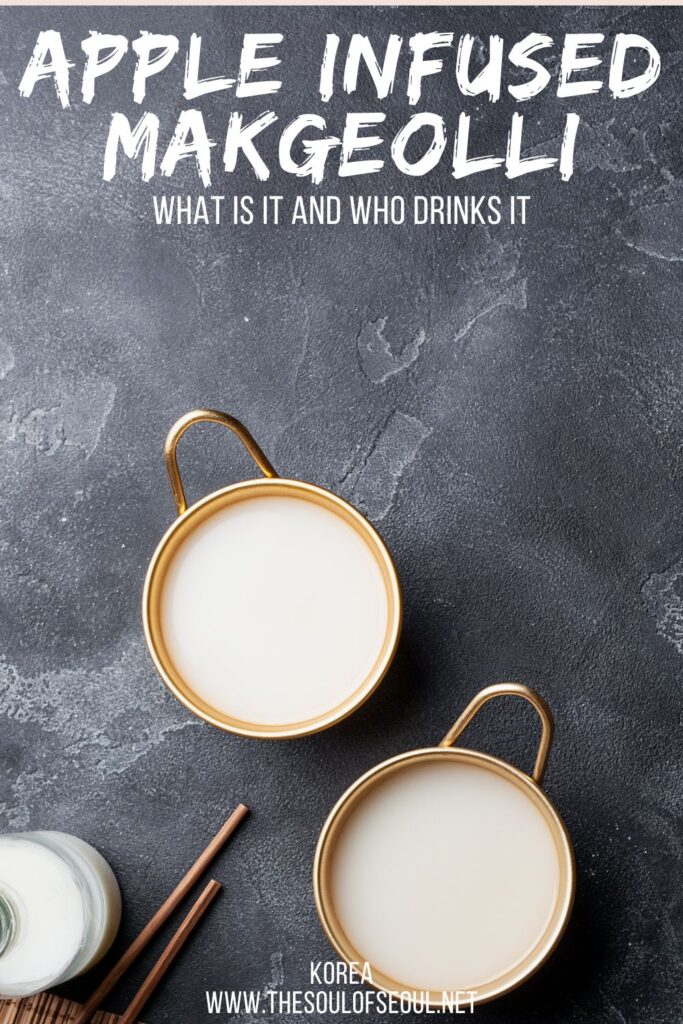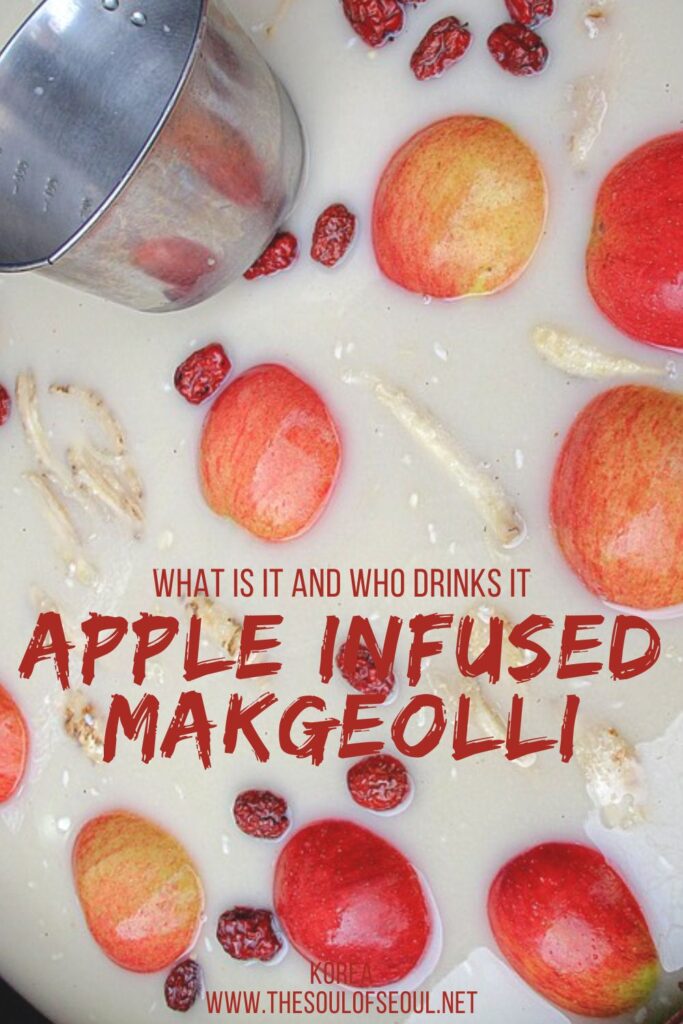Apple Infused Makgeolli, Oh My!
Last Updated on October 17, 2023
Almost every place in Korea has some special food they’re famous for, or at least the locals proclaim the fame, even if they’re the only ones to believe it. In Cheongsong, apples are the claim to fame, or one of many things that they proclaim, and boy are they truly delicious. Another one from this Slow City in Korea is a high-in-iron chicken dish that turns blue once it’s cooked!
On the way to the Juwangsan National Park, some makgeolli infused with the delicious apples, as well jujube and Korean bellflower root was spotted and I LOVE a good bowl of Korean rice wine, don’t you?

(This post contains affiliate links, which means I receive a certain percentage of a sale if you purchase after clicking at no cost to you. Thank you for your support.)
Across the country, it isn’t uncommon to see hikers partaking in a little makgeolli time while on the mountain and hiking in this region with this specialty drink will definitely hit the spot when on the trail or after.
What is makgeolli?
Makgeolli is an alcoholic beverage that has been referred to by many as “rice wine” although there are some pretty avid alcohol connoisseurs that will tell you this shouldn’t be labeled wine at all, but I’ll get to that bit later. Made from rice and mixed with nuruk, a Korean fermentation starter, it ends up being a milky white color with about 6%-8% alcohol content. Originally enjoyed by farmers and considered an after-a-hard-days-work-in-the-fields libation, it can now be found everywhere and everyone can partake. Just grab that bowl and fill-her-up!

Yes, unlike most wines from the west, makgeolli is enjoyed drunk from a bowl… were you picturing farmers with wine glasses? Nah, farmers were having their fill and enjoying it until young Korean hipsters and some Japanese customers started drinking and calling it the “new” cool thing to have in your cup. Then suddenly, the Korean tourism boards jumped in and decided to rename everything. Let’s get down to the gnitty gritty.
Why do some people fight the term “rice wine”?
Well, for starters, wines generally come from the natural fermentation of the yeasts and sugars in fruits whereas makgeolli gets its alcohol from starches that are converted to sugars and mixed with water. The process is a bit closer to beer than it is wine. Maybe “rice beer” would be more appropriate? The shelf life of makgeolli is also WAY shorter than wine. In fact, it might even be shorter than most beers, though the makgeolli industry in Korea is working to change that and they have extended it by standardizing production which also helps to reduce off-flavors and ensure more consistency for brands.

The style of drinking is also anything but chic and wine-like. Would you ever be seen gulping your wine? I should think not. Like I mentioned earlier, makgeolli was originally for farmers and they were gulping down this nutritious libation in an effort to quench their thirst after working up a sweat. And good for them! They deserved that drink headed straight to the gullet.
Considering makgeolli is made from a grain and not fruit and it has a low alcohol content, it is more akin to an ale, and I couldn’t agree more. It’s too bad that the Korean government and tourism groups want to promote it as anything but. Sit down with a group of Koreans, grab that bowl of makgeolli, maybe infused with apples, maybe not, and gulp it down as you dine on some Korean pancakes or pajeon. It’s what hiking is all about for some.. or rainy days, depending on who you ask.
It’s good any day in my book and if you’re headed to Korea, it’s definitely a must try… as long as it’s in a bowl. I definitely don’t want to see anyone pouring this into a wine glass and trying to tell me that’s how they enjoy it.
Did you like this post? Pin It!



5 Comments
MalaaDalmatinka
O..m..g… drool! This looks fabulous, and the colours are so vibrant! Also, thanks for letting me know that S.Korea has one of my favourite things on this planet: JuJubes! I thought they only grew in my country of origin (Croatia)… Miss these little ones so much haha.
Hallie
There are jujubes all over at the farmers markets here. They’re often put into chicken stews. What do you usually make with them? I’ve never bought any for personal use, but keep thinking I should buy a bag and figure them out.
MalaaDalmatinka
Oh my! I am so excited, you have no clue! I haven’t been able to find ANY fresh ones in Canada, only imported dried variations…As for their uses, we don’t mix them with main dishes… usually, we eat them raw as they are picked, but we also make jams, traditional liqueurs and alcohols, etc. They’re an extremely good natural remedy for persons suffering from all types of intestinal or gastric problems.. 🙂 They are also really strong in VitaminC. 🙂
Try some!!!! Let me know what you think!
Toodles!
NaNa
Hallie
I usually see them already dried in the markets here.. I’ll see what I can do with them and try them. ^^
MalaaDalmatinka
awesomeness! Although, if you EVER DO get a chance to pick them yourself, do it. Trust me, when they are fresh and plump, they taste sooo much better/sweeter. Happy Jujube hunting!
NaNa